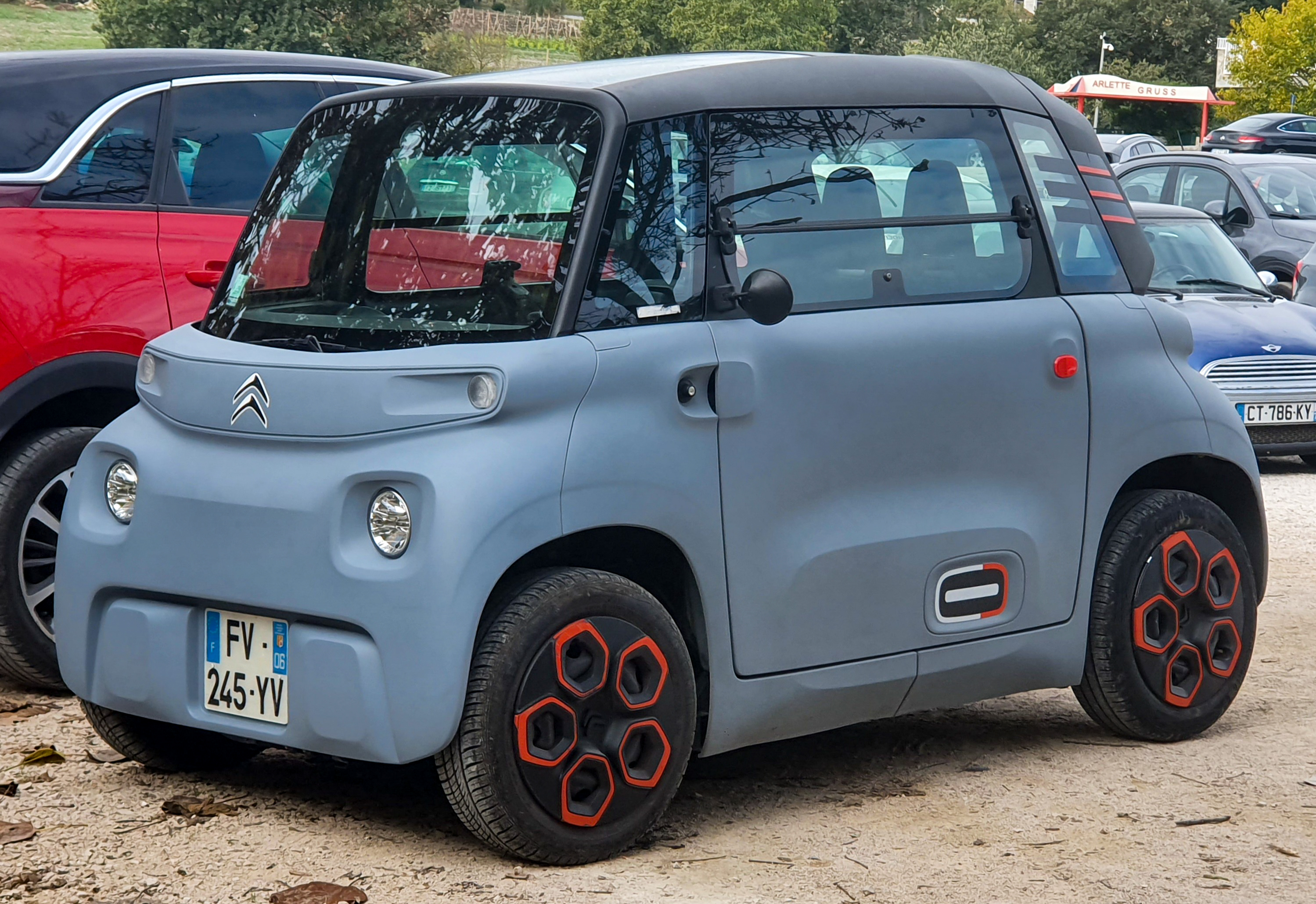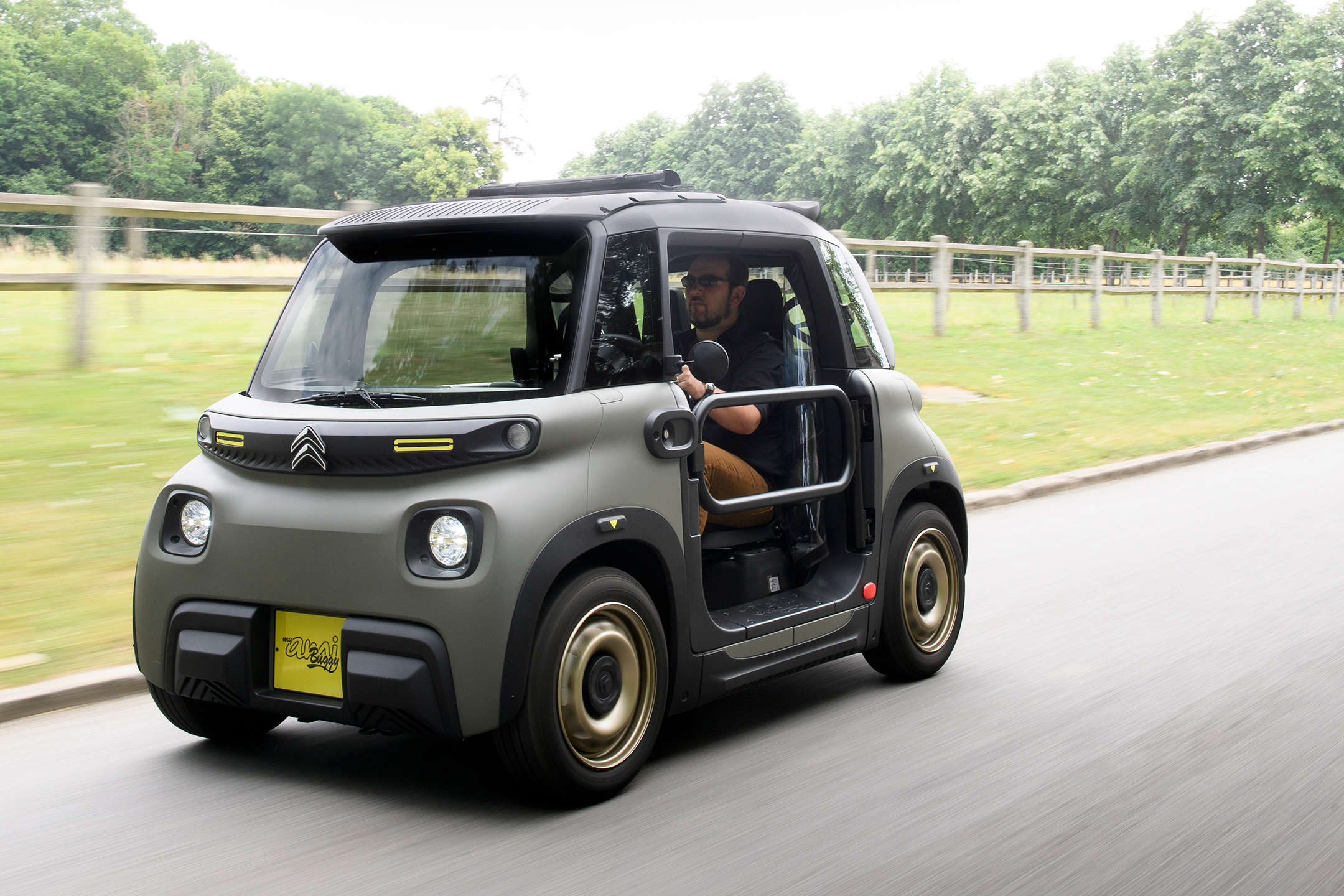The Electric Revolution: Citroën’s Charge into the Future
Citroën, a name synonymous with quirky innovation and accessible motoring, is now firmly planted in the electric vehicle (EV) landscape. While the brand’s history is steeped in groundbreaking internal combustion engine (ICE) designs, the shift towards sustainable mobility has seen Citroën embrace electrification with its characteristic flair. This article delves into Citroën’s current EV offerings, its strategic direction, and the challenges and opportunities it faces in the rapidly evolving electric car market.
Citroën’s electric strategy focuses on providing a range of EVs that cater to diverse needs, from urban commuters to families seeking practical and affordable electric transportation.

The Ami: Urban Mobility Reimagined
The Citroën Ami is arguably the brand’s most radical EV offering. This ultra-compact, quadricycle is designed specifically for urban environments. Its diminutive size, agile handling, and limited range make it ideal for navigating congested city streets.
A Unique Proposition: The Ami isn’t a traditional car; it’s a mobility solution. Its affordability and accessibility make it a compelling option for young drivers and those seeking a simple, electric alternative for short journeys.
The ë-C4 and ë-C4 X: Electric Comfort and Versatility

The ë-C4 and ë-C4 X represent Citroën’s entry into the mainstream electric car market. These models combine the comfort and practicality of the C4 and C4 X with a smooth and quiet electric powertrain.
Advanced Comfort: Citroën’s Advanced Comfort program, featuring comfortable seats and progressive hydraulic cushions, ensures a smooth and relaxing ride.
The ë-Berlingo and ë-SpaceTourer: Electric Family and Commercial Solutions
Citroën’s commitment to electrification extends to its commercial vehicle range with the ë-Berlingo and ë-SpaceTourer. These models offer practical and spacious electric solutions for families and businesses.
Versatile Space: The ë-Berlingo and ë-SpaceTourer provide ample cargo and passenger space, making them ideal for family trips and commercial use.
Citroën’s electric strategy is built on the pillars of accessibility, affordability, and practicality. The brand aims to democratize electric mobility by offering EVs that are within reach of a wider audience.
Leveraging the Stellantis Platform
Citroën benefits from the resources and expertise of Stellantis, the multinational automotive manufacturing corporation. This allows the brand to leverage shared platforms and technologies, reducing development costs and accelerating the rollout of new EVs.
Common Platforms: Stellantis’s multi-energy platforms, such as the e-CMP and STLA platforms, enable the production of EVs alongside ICE vehicles, providing flexibility and efficiency.
Emphasizing Practicality and Comfort
Citroën’s EVs are designed to be practical and comfortable, prioritizing everyday usability over performance and luxury.
Real-World Range: Citroën focuses on delivering a realistic range that meets the needs of most drivers, rather than pursuing headline-grabbing figures.
Addressing Affordability Concerns
Citroën recognizes that affordability is a key barrier to EV adoption. The brand is actively working to reduce the cost of its EVs through various strategies.
Simplified Design: The Ami’s simplified design and manufacturing process are examples of how Citroën is reducing costs.
Citroën faces both challenges and opportunities in the rapidly evolving EV market.
Competition and Innovation
The EV market is highly competitive, with established automakers and new entrants vying for market share. Citroën must continue to innovate and differentiate its EVs to remain competitive.
Technological Advancements: Rapid advancements in battery technology, charging infrastructure, and autonomous driving are transforming the EV landscape.
Infrastructure Development
The availability of charging infrastructure is a critical factor in EV adoption. Citroën must work with governments and industry partners to accelerate the development of charging infrastructure.
Public Charging Networks: The expansion of public charging networks is essential for long-distance travel and convenient charging for drivers without home charging.
Consumer Perception and Education
Addressing consumer concerns about EV range, charging, and cost is essential for driving adoption. Citroën must invest in consumer education and marketing to promote the benefits of EVs.
Range Anxiety: Addressing consumer concerns about EV range and charging availability is crucial for overcoming range anxiety.
Citroën is committed to playing a leading role in the electric revolution. The brand’s focus on accessibility, affordability, and practicality positions it well to capture a significant share of the growing EV market.
Expanding the Electric Lineup
Citroën plans to expand its electric lineup with new models in various segments, catering to diverse customer needs.
Electric City Cars: Citroën is exploring the development of new electric city cars that offer even greater affordability and practicality.
Investing in Battery Technology
Citroën, through Stellantis, is investing in battery technology to improve range, charging speed, and affordability.
Solid-State Batteries: Stellantis is exploring the development of solid-state batteries, which offer higher energy density and faster charging speeds.
Developing Connected Services
Citroën is developing connected services that enhance the EV ownership experience, such as remote charging management and navigation with charging station information.
Mobile Apps: Citroën’s mobile apps allow drivers to remotely monitor and control their EVs, including charging status and pre-conditioning.
Citroën’s journey into the electric future is marked by a blend of innovation, practicality, and a commitment to making electric mobility accessible to all. As the EV market continues to evolve, Citroën’s unique approach and strategic investments are poised to solidify its position as a key player in the electric revolution.



